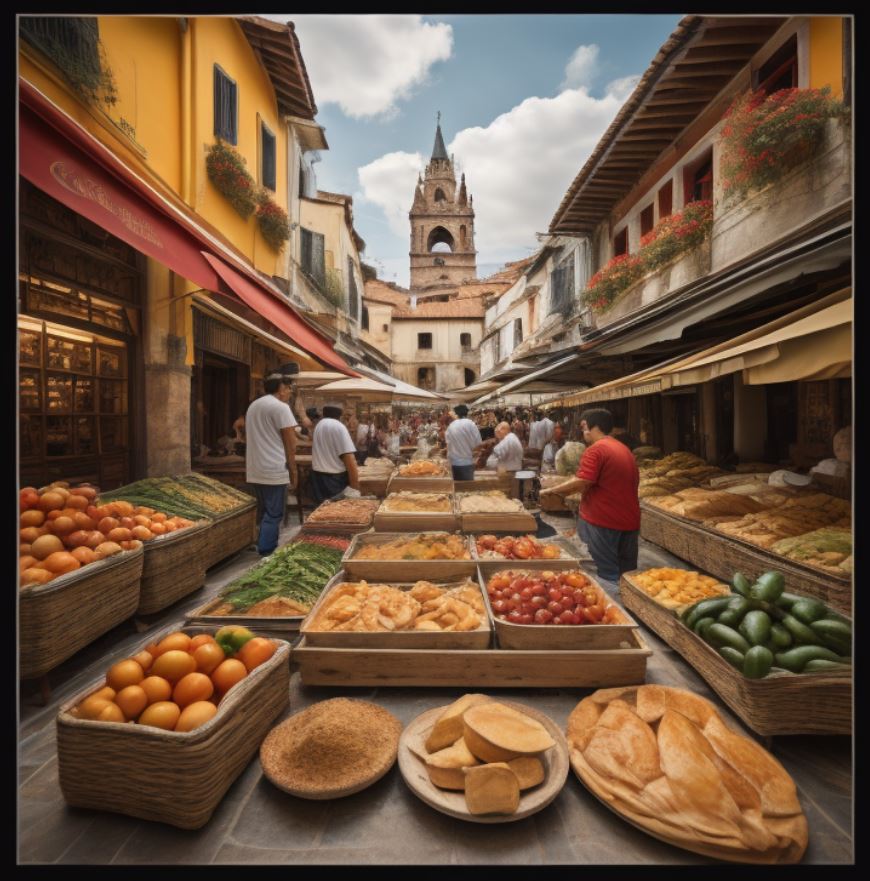
Travel has evolved into a multi-sensory experience, and one of the most delightful aspects is undoubtedly the culinary journey. Food and drink tourism, also known as gastronomic tourism or culinary tourism, has surged in popularity over recent years, offering travelers a delectable way to explore the world. In this article, we’ll delve into the fascinating world of food and drink tourism, exploring its roots, its significance, and how it has become a global phenomenon.
Defining Food and Drink Tourism
Food and drink tourism encompasses the act of traveling with the primary goal of experiencing the local cuisine and beverages of a destination. It goes beyond merely eating; it involves immersing oneself in the culture, traditions, and flavors of a place. This type of travel allows individuals to savor unique dishes, sip regional wines, and indulge in culinary traditions that have been passed down through generations.
A Historical Perspective
The concept of traveling for culinary pleasure is not new. Historically, people have been drawn to distant lands for their culinary treasures. Ancient trade routes, such as the Silk Road, facilitated the exchange of spices, ingredients, and culinary techniques, leading to the fusion of flavors and the creation of new cuisines.
In the 18th century, the “Grand Tour” of Europe was popular among the wealthy elite. Travelers embarked on extended journeys through Europe to experience the continent’s art, culture, and, of course, its food. This marked the beginning of food tourism as we know it today.
The Rise of Food and Drink Tourism
In recent years, food and drink tourism have experienced significant growth. Several factors contribute to its popularity:
- Globalization: The ease of international travel and the interconnectedness of cultures have made it easier for people to explore diverse culinary traditions.
- Culinary Television and Media: Cooking shows, food documentaries, and social media platforms have ignited interest in global cuisines, inspiring travelers to seek out authentic food experiences.
- Adventure and Authenticity: Travelers are increasingly seeking unique and authentic experiences. They want to taste traditional dishes, learn from local chefs, and savor flavors that can’t be replicated at home.
- Sustainability: Food tourism often emphasizes sustainable and locally sourced ingredients, aligning with the growing interest in eco-friendly travel.
The Impact of Food and Drink Tourism
Food and drink tourism have profound effects on both travelers and the destinations they visit.
For Travelers:
- Cultural Enrichment: Food and drink tourism offers a deep understanding of local culture and traditions. Sharing a meal with locals and learning about their culinary heritage fosters cultural exchange.
- Sensory Experience: Travelers engage their senses in a way that few other activities can provide. Tasting exotic flavors, smelling aromatic spices, and witnessing food preparation are sensory delights.
- Memorable Experiences: Culinary experiences often create lasting memories. A special meal or cooking class can become a highlight of a trip, etching itself into travelers’ minds.
- Personal Growth: Trying new foods and engaging with unfamiliar culinary customs can expand one’s horizons and promote personal growth.
For Destinations:
- Economic Benefits: Food and drink tourism can significantly boost local economies. It supports restaurants, markets, food producers, and culinary artisans, creating jobs and generating revenue.
- Cultural Preservation: Culinary traditions and recipes are passed down through generations. By attracting food tourists, destinations can help preserve these valuable aspects of their heritage.
- Tourism Promotion: A strong food and drink culture can be a powerful draw for tourists. It complements other attractions and encourages repeat visits.
- Community Engagement: Food and drink tourism often involves interactions with local communities. This fosters goodwill and cross-cultural understanding.
Notable Food and Drink Tourism Destinations
Food and drink tourism knows no boundaries. It can be experienced in bustling cities, serene villages, and everything in between. Here are a few noteworthy destinations that offer exceptional culinary experiences:
- Italy: Renowned for its pasta, pizza, wine, and gelato, Italy is a gastronomic paradise. Regions like Tuscany, Emilia-Romagna, and Sicily offer distinctive culinary traditions.
- Japan: Japanese cuisine is celebrated for its precision, aesthetics, and diversity. Sushi in Tokyo, ramen in Kyoto, and street food in Osaka are just a taste of Japan’s culinary wonders.
- Mexico: Mexican cuisine is a UNESCO-recognized cultural treasure. From tacos and mole to mezcal and tequila, Mexico offers a vibrant tapestry of flavors.
- Thailand: Thai street food markets are legendary, offering a tantalizing array of dishes. Try pad Thai in Bangkok, green curry in Chiang Mai, and Tom Yum in Phuket.
- Spain: Spain is known for its tapas, paella, and extensive wine regions. Barcelona, Madrid, and the Basque Country are culinary hotspots.
Culinary Experiences in Food and Drink Tourism
Food and drink tourism encompasses a wide range of experiences tailored to different tastes and interests:
- Cooking Classes: Learn to prepare local dishes from expert chefs. Classes often include a visit to markets to source ingredients.
- Food Tours: Guided tours take you to the best eateries, street food stalls, and markets to sample a variety of dishes.
- Wine and Beer Tours: Explore vineyards, wineries, and breweries to taste regional wines, craft beers, and spirits.
- Farm-to-Table Experiences: Visit farms and artisanal producers to learn about sustainable agriculture and traditional food production methods.
- Culinary Festivals: Attend food festivals celebrating regional specialties, offering a taste of the local culture.
- Gourmet Dining: Savor multi-course meals at Michelin-starred restaurants, often featuring innovative and locally inspired dishes.
Challenges and Opportunities
While food and drink tourism offer many benefits, there are also challenges to consider:
- Over-Tourism: Popular food tourism destinations may face over-tourism, leading to crowded restaurants and markets. Sustainable practices are crucial to manage this.
- Cultural Appropriation: As interest in global cuisine grows, there’s a risk of cultural appropriation. It’s essential to respect and learn about the cultural significance of the dishes you’re enjoying.
- Environmental Impact: The production and distribution of food can have environmental consequences. Sustainable and ethical choices are essential for responsible food tourism.
Conclusion
Food and drink tourism is a delightful way to explore the world’s cultures, traditions, and flavors. It offers travelers the opportunity to engage their senses, create lasting memories, and connect with local communities. Moreover, it provides economic benefits to destinations and plays a crucial role in preserving culinary heritage. As food and drink tourism continues to grow, it’s essential for travelers to embrace sustainable and responsible practices to ensure that the world’s culinary treasures can be enjoyed for generations to come. So, whether you’re savoring sushi in Japan, indulging in gelato in Italy, or sampling street food in Thailand, food and drink tourism invites you to embark on a mouthwatering adventure around the globe.



